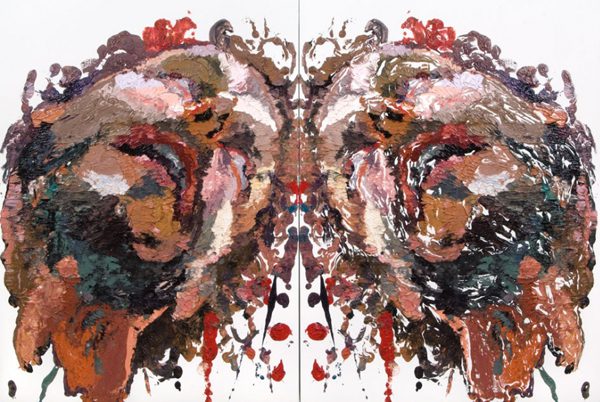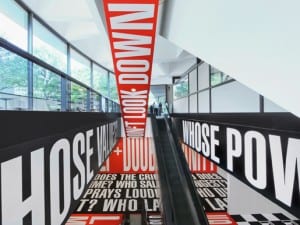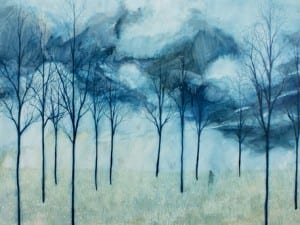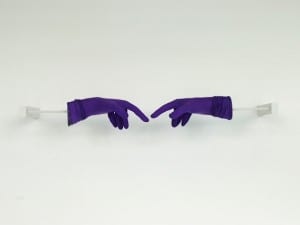Australian Painter Ben Quilty was recently announced as the overall winner of the Prudential Eye Award. A competition that seeks to promote artistic talent that previously may have been overlooked, it reaches to incorporate a diverse region of Greater Asia that stretches east from Azerbaijan across Russia, China, Korea, the Philippines and as far south as New Zealand. The painter’s work is now on display at the Saatchi gallery, London providing a significant introduction to the London art scene for Quilty as his first UK exhibition.
The work displayed features paintings from his Rorscach series, which references the psychoanalytic technique used to test personality traits. The test itself analyses the responses of subjects based on their interpretations of symmetrical images, or ink blots, on a series of cards. The paintings in this series are created to present a similar result. Starting with one canvas he may then work with up to eight further pieces that finally fit together like a puzzle. One side is painted and the other a transferred mirror re-print of the original design. With an intention to challenge preconceptions of iconic imagery, these works aim to prompt a discussion between the personal and the cultural.
One particular image of note is the reflected image of two faces looking upwards. His quick working method is not concerned with perfection, making use of smears and splatters. The viewer is forced to “find” a point of recognition in the work, much like when completing the Rorscach test. Whilst the sheer act of having transferred an image of this scale from one painted canvas to another without disrupting its original design or spoiling its copy is impressive.
There are also scenes of tree boughs by a lake and of a waterfall, in these examples Quilty employs this technique to merge reflections both horizontally and vertically across the whole image plane. These easily recognisable scenes of nature are here used to offer an alternative depiction of nature. Considering how whilst the reality of nature is wild and uncontrolled, in Art we as the audience are presented with images that are standarised portrayals from a sort of collective image bank.
A further series of unsettling portraits adopt a similar working method of painterly style but to new means. Blurred, abstract faces speak of disquieting narratives unique to Quiltys artistic expression. There is an interlinking continuity where one painting leads to the next, working through an expression where the identity of the sitter becomes obscured until it is a blank white space immersed in the canvas. “Distinctive” and “gestural” being terms coined for the description of this body of work, Quilty’s intentions to create or evoke an interrogative and reflective viewpoint for audiences is upheld.
Finally there is a seemingly impromptu wall based installation that makes use of black spray paint. Created on the eve of the exhibition opening it is intended to represent an interpretation of the exhibition space at the Saatchi. In effect it becomes a reactionary comment on the standardized space of the gallery environment itself, not perhaps just wholly the Saatchi gallery. Crossing (in Quilty’s own terms) the “low-brow” technique of spray painting – of graffiti, tagging and marking with the pristine setting of the gallery; it seeks to subvert the existing notions of hierarch within Art.
It is an interesting notion for the artist to position his work in front of what is an ugly black frame of tangled swirls and spirals. Whether this is wholly successful is debatable, however it does successfully engage the viewer in an acknowledgment of the theatrics of looking. Giving way to new expressions that contradict associations of painting as an “outmoded” form of visual expression.
Maresa Harvey
Ben Quilty, until 3 August, Saatchi Gallery, Duke Of York’s HQ, King’s Road, London, SW3 4RY.
Credits
1. Image courtesy of Ben Quilty.





